
Topshop hung monitors made to look like birdhouses inside its Oxford Circus store during London Fashion Week. As images from its fashion show played on the screens, the monitors shared "chirps"—brief birdsong-like sounds that activated data on nearby mobile devices running the Chirp app.
Photo: Courtesy of Topshop
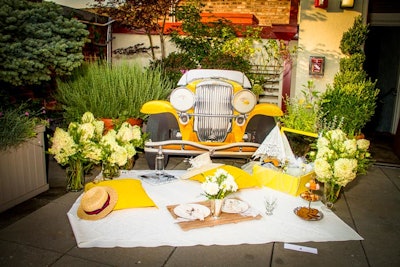
Marie Aiello Design Studio’s elegant Great Gatsby picnic spread included fresh flower arrangements, a tiered display of cookies, 1920s-style accessories, and a façade of the yellow 1929 Duesenberg Leonardo DiCaprio drives in Baz Luhrmann’s movie.
Photo: Becky Yee Photography
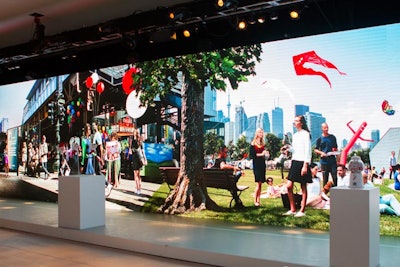
The centerpiece of the September 5 bash was an interactive wall that measured 120 feet long and 6 feet high. The visual created by Mother New York was divided into sections that highlighted five different locations in North America—New York City, Miami, Los Angeles, Dallas and Toronto—and responded to different movements.
Photo: Courtesy of Target
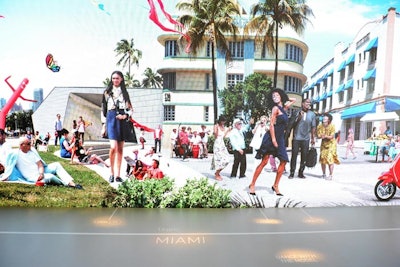
Motion sensors reacted to guests at the event. In the section of the wall that represented Miami, a model danced for attendees.
Photo: BFA NYC
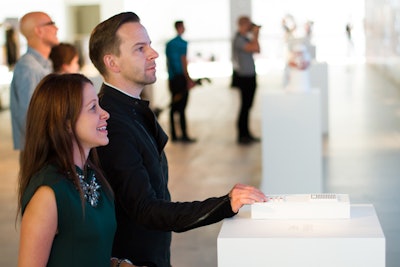
At each city section, different activities had different results on the interactive wall. For instance, in the Dallas vignette, guests could click through a projector to make different videos play on the drive-in theater screen or pull on light cords to cause different lighted moments happen—like making fireworks appear or turning on a food truck sign.
Photo: Courtesy of Target
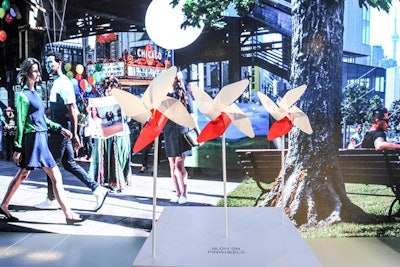
Blowing on pinwheels in one section triggered the movement of balloons in the walls video image. In another area, an audio mixer allowed guests to push a lever to start a variety of events: a laser party with dance music, flickering taxi lights, or turning the Williamsburg Bridge lights on with the sounds of a train going by.
Photo: BFA NYC

In Toronto, guests could make Lim turn around on a park bench by taking a picture of, or with, him, or, by eating candy from a dispenser, they could trigger a sequence of all the cast members in the shot to begin eating their picnic foods.
Photo: BFA NYC
1. Robots That Socialize
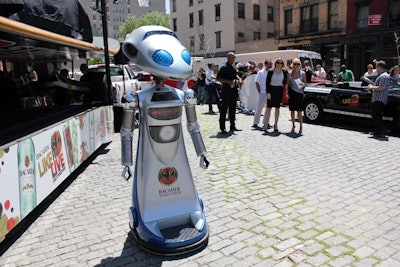
Machines are getting smarter. They may not be like the androids seen in I, Robot—yet—but researchers are building devices that not only mimic human behavior, but also react to their environment. With advances in such technology at places like the Georgia Institute of Technology, can the idea of socially intelligent machines acting as event ambassadors be that far off? There have already been attempts to introduce robots at experiential gatherings, including at Bacardi's 2011 Like it Live promotion in New York.
Photo: Jika González/BizBash
2. Furniture That Tweets
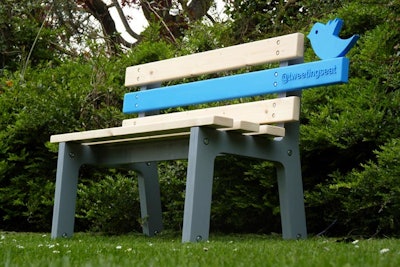
Machines don't have to be mobile to be intelligent, as is the case with the TweetingSeat, a product U.K.-based designer Chris McNicholl created. The interactive park bench is activated when someone takes a seat, uploading images from two cameras to a live Twitter feed. Imagine interactive furniture that automatically snaps shots of guests and creates content for social media platforms.
Photo: Courtesy of Chris McNicholl
3. Photo Booths That Make 3-D Models
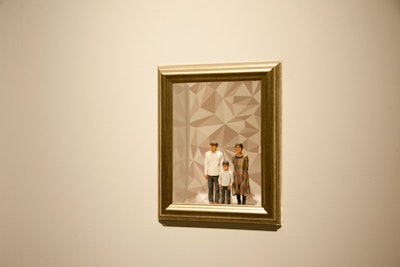
The idea of 3-D printing has come a long way, and now there are devices that can produce three-dimensional objects like clothing, jewelry, and headphones. A couple of companies are taking the concept to the consumer space with photo booths that can print miniature figurines of its subjects, like Japanese creative agency Party's Omote 3D pop-up, or replicas of people's heads, like the one MakerBot debuted at its New York store.
Photo: Courtesy of Omote
4. Indoor Clouds That Predict the Weather
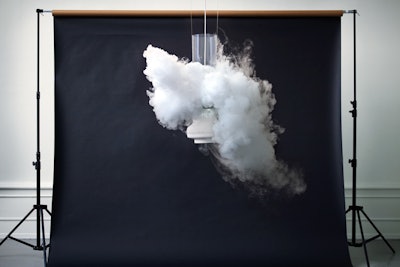
Bringing clouds indoors sounds like something out of Harry Potter, but Micasa Lab, a division of a Swedish furniture manufacturer, has developed a product that combines liquid hydrogen with hot water to create a circulating cloud of steam around a lamp. What's really unique about the Nebula 12 is that it can use meteorological data to change its form and color, serving as a three-dimensional weather forecast.
Photo: Courtesy of Micasa Lab
5. Floating Touch Screen Displays
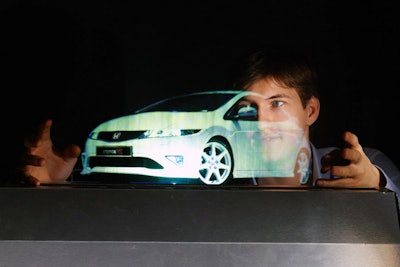
Touch screens have made computers with keyboards and mice look clunky. And now there's a company making touch screen monitors seem out-of-date. Displair is a device that uses "touchable" air, that is, a thin stream of air infused with microscopic water particles, to display images. What's more, users can interact with the air, navigating the screen with their fingers. It's essentially a touch screen without the screen, which, if used at events, potentially could eliminate the need for bulky computer stations.
Photo: Courtesy of Displair
6. Interactive Projections Mapped in Real Time
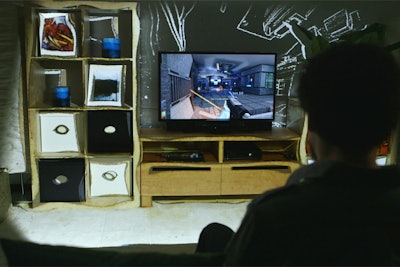
Projection mapping—also known as 3-D mapping—has become a wildly popular tool for event marketers, and a Microsoft Research project extends the use of that technology even further. Designed as a form of immersive entertainment, a prototype dubbed IllumiRoom captures the forms and layout of a room via a Kinect for Windows camera and, with a projector, expands the visuals beyond the screen in real time. The system can even make it look like a room is moving.
Photo: Courtesy of Microsoft Research
7. Paint That Reacts to Temperature Changes
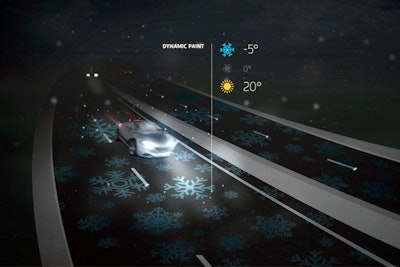
Dutch designer Daan Roosegaarde and construction company Heijmans Infrastructure have come up with a way to make roads better for drivers. The Smart Highway concept not only includes roads treated with photo luminizing powder (which absorbs energy from sunlight to glow in the dark) and lanes that can charge battery-powered cars, but also dynamic paint that becomes visible when temperature fluctuates. In the prototype, snowflakes appear when it's cold and the roads are slippery, signaling the changing conditions to drivers. The paint could have interesting event applications, whether it's to highlight an entrance or exit, or change the look of decor.
Rendering: Courtesy of Daan Roosegaarde and Heijmans
8. Robots That Make Sculptures From Sand
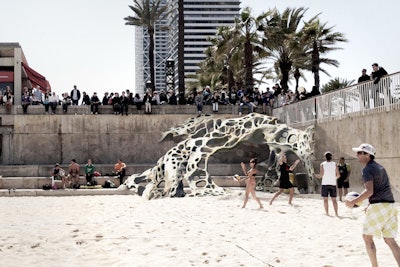
Imagine temporary structures made from sand or soil. That's what Petr Novikov, Inder Shergill, and Anna Kulik from the Institute for Advanced Architecture of Catalonia did when they developed Stone Spray. The project involves a robotic 3-D printer that binds soil or sand to construct solid, if temporary, architectural shapes. It's eco-friendly, too, as the robot can be powered by solar energy.
Photo: Courtesy of Stone Spray
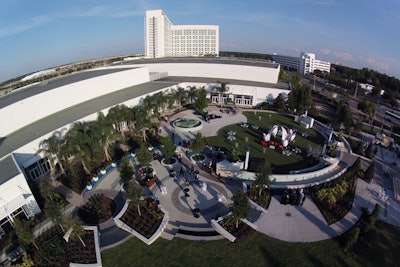
The drone can fly as high as 130 feet to capture a very wide view of an event, as it did at the grand opening of Hilton Orlando's new outdoor venue October 29.
Photo: Courtesy of Sonus Studios
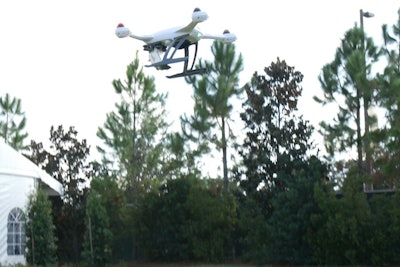
Sonus Studios uses a remote-controlled quadcopter to shoot still images and video at events.
Photo: Courtesy of Sonus Studios
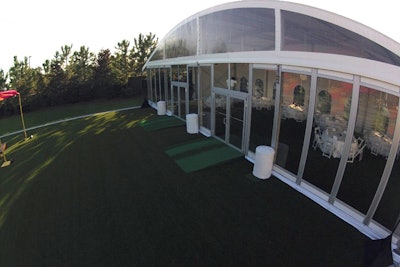
The drone can also fly at a lower altitude to provide different perspectives.
Photo: Courtesy of Sonus Studios
Fox Upfront Party
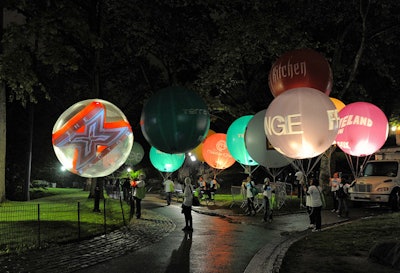
Fox also brought back the illuminated balloons it had last year, using the inflatables printed with the names of shows to guide guests through the dark.
Photo: André Maier Photography



















